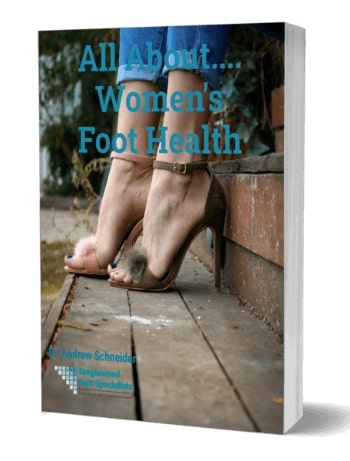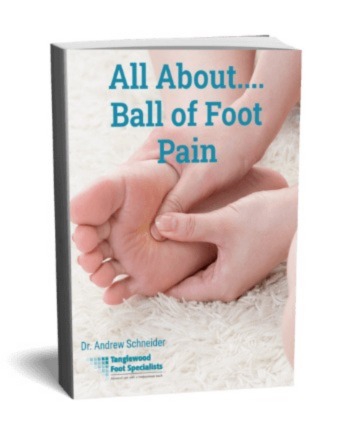
Every year or so, a brand new fitness craze seems to sweep our country. First, there was CrossFit. Then there was PX90, and SoulCycle. (Plus a pandemic, which made it hard to do any of our favorite workouts together.)
Now, each of these fad workouts has something in common. They pick up devoted fans. At a crazy-fast pace! But they are also leading to many foot injuries. Because new exercise trends get new exercisers. Not to mention intense devotion, and multiple workouts in a row, all doing the same motion. And when devotees jump into these intense workouts and keep putting pressure on the same part of their feet, they often get hurt.
One of the workout trends that has been sticking for many years now? Long enough to be a fitness staple, and not a trend> Barre-based, ballet-inspired workouts like Pure Barre Houston. They're extremely popular, especially with many of the women we see in the office. And they're great in lots of ways. Barre can tighten up your core and tone your muscles.
But, like pickleball, there can be a darker side to hitting the barre. Because this workout can lead to major foot injuries (Have you looked at a ballerina’s feet recently? Google it; it ain’t pretty.) So, with that in mind, let's look at your barre workouts. And find a safer way to plié your way to that muscle shake. Without killing your feet.
3 Ways to Take Pressure off Your Feet in Barre Class
At our Houston podiatrist's office, we see lots of sports and workout injuries. But we want our patients to work out without injury. So, with that goal in mind, we're sharing these stay-safe tips for barre enthusiasts. With thanks to Zayna Gold Elefteriadis, the founder of Boston Body Barre.
Stay low to avoid foot pain.
When you're taking barre class, many moves will be in relevé. (That's just the ballet term for heel lifts.) Now, barre teachers are famous for getting your heels higher off the ground. Some even stick their hands under your feet, so your heels don't drop.
But going sky high on heel lifts puts major pressure on your toes. And, as Zayna explains, “For many adults, holding a high relevé can cause foot pain. So instead, I recommend going into a ‘hover’ relevé, which is lower. You still get the same benefits, but your weight stays in the ball of the foot, which causes less strain.”
We really love this advice. Because, Zayna only talked about the short term impact of high relevés. But our podiatrist in Houston sees the long term potential for damage. These include bunions, because you put extra pressure on your toe bones. And that could cause your bones to move inward and create extra bumpy bone growth.
Plus, with all that pressure on your toes, hammertoes are a worry. This condition makes your toes buckle. (Sometimes hammertoes are rigid, sometimes flexible.) And standing and exercising on your toes can increase your risk for hammertoes. Or make an existing problem worse.
DON’T go barefoot. ![If ballerinas wear shoes, you can cover your feet in barre class to avoid injury]()
When you enter barre class, your instructor will suggest doing class barefoot. (Or with grippy socks.) But consider wearing supportive sneakers or dance shoes for barre class instead. Especially if you’re noticing foot pain.
Even Zayna says, “I often wear them.” Why? Because years of barefoot workouts left her with terrible joint deterioration. And she then had to have foot surgery. Something you always want to avoid. But particularly if you're trying to get into a new workout routine. Because after foot surgery, you'll have to stay off your feet. For at least a few weeks, if not longer. Which means wearing shoes at the barre could keep you in the game. Worth it, right?
On that note, keeping shoes on isn't something that should only happen at the barre. Why? Wearing shoes at home may be even more important, since everyone has been spending more time there since the covid lockdowns made work from home a more frequent option.
While going barefoot at home doesn't put as much immediate pressure on the feet as hitting up a barre workout, over time the pressure of walking barefoot on hard wood or tile floors gets rid of arch support and leads to excessive pronation, or rolling inward. In combination, they can leave you with the type of foot pain you might experience after an overly-ambitious barefoot workout. So consider sneaks at home and at the gym, and keep looking at your barre form with our next tip.
Check your angles
Now we've got your feet covered, we've got to move up your body. Namely, to your hips. Because, in barre classes, lots of moves involve turnout. (That's when your hip rotation causes your knees and toes to point outward.)
For the barre babes, a big turnout means big results in your hips and thighs. But for a podiatrist, forcing yourself into an over-exaggerated turnout can cause foot pain. Because when you change the angle of your feet, you change the way they absorb pressure. That means some parts of your feet will take a bigger beating. And that can hurt.
So, how can you stay safe and still get the lean muscle barre is famous for? Zayna offer this suggestion. “Start your feet at a turnout of 45 degrees and then adjust it, either by less or more, to make your hips, knees, and ankles feel free from strain.”
For some people, that means your turnout will look like a pizza slice. For others, it might just be a dieter's slice of cake. Everyone will be different, and you may have to play around to find your spot. But when you reach the point that’s right for you? Any pain in you felt before should stop hurting. And if it doesn't, or if it returns, shift to a less dramatic turnout.
Treating Barre Injuries in Houston
If you're ready to get back to the barre now, please keep this in mind. As always, our suggestions will only help prevent injury. They are not a foolproof way to stay safe.
For that reason, pain may come with new workouts. And that doesn't have to be a big deal, if you get help. So, if you hurt your feet while working out, give us a call. We'll schedule an appointment with Dr. Andrew Schneider as soon as possible. And until you come in, take a pause on exercising, so you don't make things worse.




















